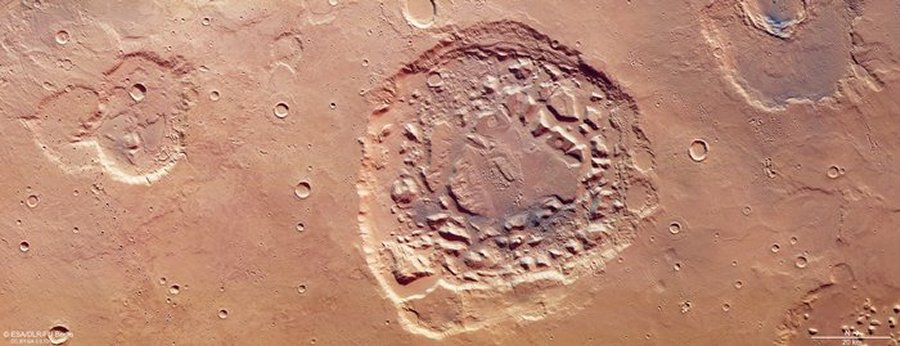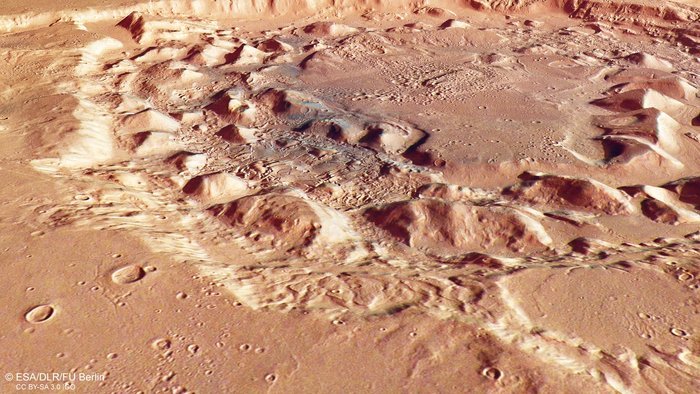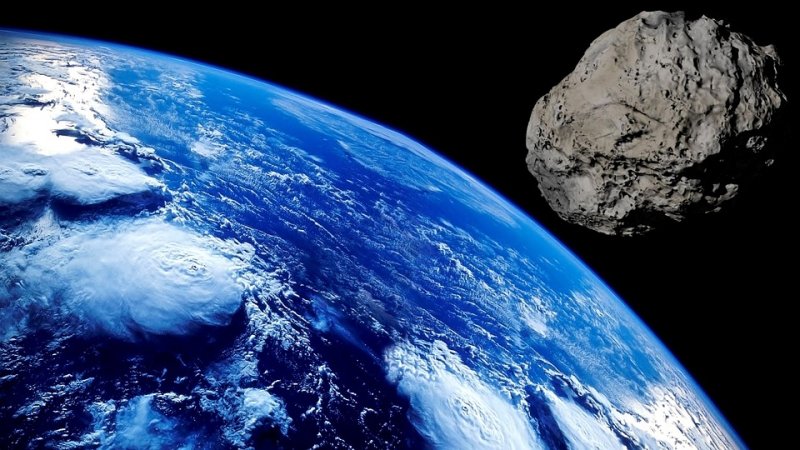Ismenia Patera On Martian Surface: Is It An Impact Crater Or Supervolcano?
MessageToEagle.com – ESA’s Mars Express has taken images of a crater named Ismenia Patera on the Red Planet. Its origin remains uncertain: did a meteorite smash into the surface or could it be the remnants of a supervolcano?
Ismenia Patera (in Latin: ‘flat bowl’) is located in the Arabia Terra region on Mars, between the planet’s northern and southern regions.

Image credit: ESA/DLR/FU Berlin
Ismenia Patera is some 75 km across. Its centre is surrounded by a ring of hills, blocks and lumps of rock thought to have been ejected and flung into the crater by nearby impacts.
Mars’ topography is clearly split into two parts: the northern lowlands and the southern highlands, the latter sitting up to a few kilometers higher. Ideas for how this dramatic split formed suggest either a massive single impact, multiple impacts or ancient plate tectonics as seen on Earth, but its origin remains unclear.
The material thrown off from these events also created small dips and depressions that can be seen within Ismenia Patera itself. Gullies and channels snake down from the crater rim to the floor, which is covered by flat, icy deposits that show signs of flow and movement – these are likely akin to rocky, ice-rich glaciers, which have built up over time in the cold and arid climate.
Such high-resolution and detailed images shed light on numerous aspects of Mars – for example, how the features seen scarring the surface formed in the first place, and how they have evolved in the many millions of years since. This is a key question for Ismenia Patera: how did this depression form?
There are two leading ideas for its formation. One links it to a potential meteorite that collided with Mars. Sedimentary deposits and ice then flowed in to fill the crater until it collapsed to form the fissured, uneven landscape seen today.

The second idea suggests that, rather than a crater, Ismenia Patera was once home to a volcano that erupted catastrophically, throwing huge quantities of magma out into its surroundings and collapsing as a result.
Arabia Terra also shows signs of being the location of an ancient and long-inactive volcanic province. Certain properties of the surface features seen in Arabia Terra suggest a volcanic origin: for example, their irregular shapes, low topographic relief, their relatively uplifted rims and apparent lack of ejected material that would usually be present around an impact crater.
However, some of these features and irregular shapes could also be present in impact craters that have simply evolved and interacted with their environment in particular ways over time.
ESA’s Mars Express has been circling the planet Mars since 2003.
MessageToEagle.com










